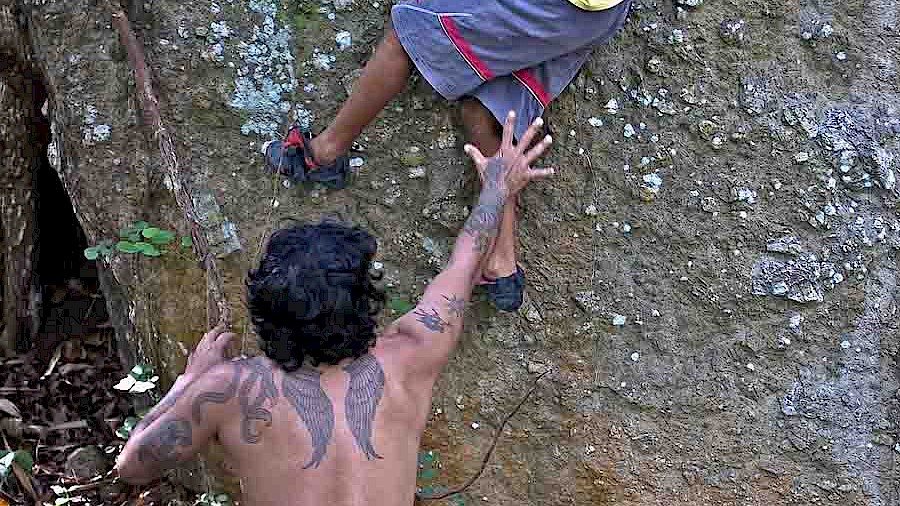Health and Safety is one of my biggest frustrations in life. While the majority of us are perfectly capable of applying common sense to most situations and therefore assess their risk, decision makers seem to think we are all incapable of living and surviving. But why are more and more people becoming increasingly reliant on signs, guidelines and rules to guide them through life without becoming the winner of the annual Darwin Award?
I believe the answer to this question lies within the way we introduce children to risk and it's assessment. Climbing instructors are in a unique position to be instructing in an activity that is considered adventurous and dangerours by children, yet in terms of actual risk is easily manageable. But how do we ensure that a child actually understands and subsequently identifies risk in life? A classic example would be the ongoing discussion on spotting in bouldering. While it is easy to tell children to stay within a certain area while others are climbing and define a defacto safe zone, it is a lot more complex to make them understand why areas are safe or not. By tapping into basic risk analysis strategies we all master within the first few years of our life - e.g. anything hitting us or us hitting anything equals pain - we can give children the basic toolset for effective personal risk management.
It is easy to explain to a child of mild intelligence that the aim of spotting is to prevent someone from hitting their head or landing on it. It is hard to make them understand when to stop spotting as it increases the risk of two injured parties (climber and spotter) rather than just one (climber). A child being given responsibility such as spotting will naturally dismiss personal concerns and carry out the responsibility as told - or become distracted and abandon it completely. The important thing to understand is that children do not make conscious decisions to abandon responsibility. Unlike adults a child does not constantly assess a situation and then make a live decision as to whether the current course of action is appropriate. In spotting, a spotter will generally stop spotting once the danger of the climber injuring both if falling off outweighs the benefits of spotting in the first place. For a child this process of thought can be simplified by saying "Imagine the climber is a rock, if the rock falls on you from where it is now - would it hurt?" - if the answer is yes then stop spotting, get out of the way and keep an eye out for people around your climber.
In many cases this simplified version of decision making would not be very appropriate, especially given that situations can change suddenly and it is unlikely that a child asks itself the aforementioned question constantly while still remembering whatever other instructions we have given. But thinking about our own decision making processes regarding risk in life we can reduce almost all decisions down to "Will it hurt me?" or "Will it hurt others?". So by introducing this basic decision making into childrens' lives early on and allowing them to gain experience in applying these simple principles we are enabling them to become more risk aware in later life. We are in essence educating them in the application of common sense. So next time instead of simply saying no to a child or telling it off for not doing something right in climbing, think about the decision making process you went through just before addressing whatever situation you are addressing and then reduce it down to the most basic impacts outlined earlier.
To paraphrase an old saying "tell a child about a risk and it will survive a situation - teach a child how to assess risk and it will assess many more".


Leave a comment